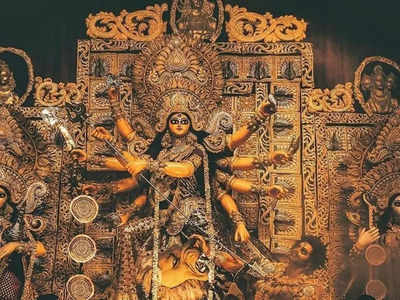
Navratri Day 5 Vastu Tips
Golden complexioned, seated on a lotus flower – Padamasani and riding lion, Maa
Skandamata
has four arms (chaturbhuji) and three eyes. Holding lotus and embracing Lord Skanda, while blessing the cosmos with one of Her hands in varada mudra, the goddess is worshipped on the fifth day of Navaratri. Governing the Visuddha Chakra and the planet Budh (mercury), Goddess Skandamata is Goddess Parvati when She became the mother of Lord Skanda (Lord Kartikeya).
By worshipping the Goddess, the wishes of devotees are fulfilled, and they advance to a state of pure consciousness.
It is believed that She bestows salvation, control, prosperity, and treasures upon Her devotees. Her blessings multiply because, when a devotee worships Her, Lord Skanda, Lord Kartikeya seated in her lap, is also worshipped. Thus, the grace of both Skandamata and Lord Skanda is received.
The following mantra is chanted while praying to the goddess:
Yaa Devi Sarva Bhooteshu Skanda Mata Rupena Samsthitha | Namstas aye Namstas aye Namstas aye Namo Namaha ||
Simhasanagata Nityam Padmanchita Karadvaya।Shubhadastu Sada Devi Skandamata Yashasvini॥
Benefits of chanting Skandamata Mantra
By chanting Skandamata mantra, devotees can connect with Her divine presence, leading to a deeper understanding of both
Themselves and the universe, thus growing spiritually.
The repetition of the mantra helps clear the mind of negative thoughts and emotions, creating a calmer and more focused state.
Worshipping Goddess Skandamata aids in good fertility and promotes the child bearing power of the devotee.
Also, the Skandamata Mantra is said to provide protection from negative energies and evil spirits.
During worship, flowers that are Offered as Pushpanjali to Maa Skandamata and other articles, should be offered to Lord Kartikeya as well.
It is auspicious to offer unbroken rice (akshat), flowers, kumkum (vermilion), and fruits besides lighting a ghee lamp in front of the Goddess.
Keeping the puja area clean and clutter-free pleases Goddess Durga. Northeast (ishana kon) of the room is the best area to place Maa Durga’s idol upon a wooden plinth.
During Navratri puja, one should face the east and north direction while praying. This helps attract success and courage.
Navratre should begin with a Kalash full of clean water, topped with a coconut and adorned by mango leaves. The Kalash helps improve communication and promotes harmony. Also, one should invoke the energy of the Akhand Jyoti (ghee lamp) in the mandir as it harnesses good fortune and inner peace.
Tulsi plant in the northeast corner of the house strikes harmony, invokes peace and prosperity.
As per Vastu Shastra, the sound of blowing conch shells and ringing bells generates positive energy and pleases the Goddess.
Written by:- Ms. Aarna Jai Madan , Vastu and Interior Consultant, Founder of Siddhhi Arts












 English (US) ·
English (US) ·